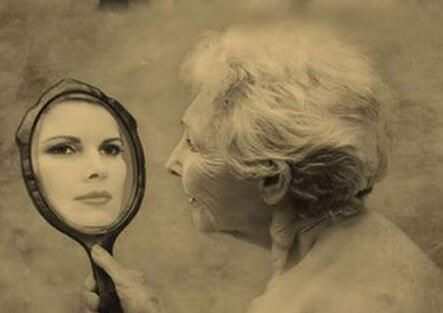Dementia has many faces, many ways to show us how horrible forgetfulness is, although the best known dementia is Alzheimer’s disease, it is not the only one that exists, although it is the most common.
Contrary to popular belief, not all forms of dementia are irreversible; in some cases, when the cause is identified, they can be treated and even corrected, such as: vitamin B12 deficiency dementia, vascularitis dementia, hypothyroidism or hydrocephalus, among others.
- Currently.
- Dementia is included in DSM-5 under neurocognitive disorders.
- Along with delirium.
- Amnesic disorders and other neurocognitive disorders.
- These disorders are those in which cognitive impairment or loss is not present from birth or early childhood and therefore occurs throughout life and becomes visible when comparing the person’s current performance level.
- With the previous level.
It is a degenerative disease of the brain whose causes are unknown, usually begins gradually and implies a continuous, slow and gradual deterioration, with an average duration of 8 to 10 years, currently this disease is incurable. We can see three different phases:
This usually begins suddenly and the main characteristic is a deterioration in recent memory (which is the part of memory that is related to what happens in the present moment, that is, you will have problems remembering daily tasks and learning ).
In language, it is very common to lose the richness of vocabulary because the person has difficulty finding words (anomia) trying to solve using circumlocus (tours on the same subject) and paraphases (which consists of replacing one word with another in a similar context).
Personality changes can occur, such as apathy (which is lazy or disinterest in things), irritation, aggression, mental stiffness (inability to change thoughts, that is, the person becomes obsessed with a thought and nothing will cause him to change his mind).
Emotional changes, such as anxiety or depression, can also occur, because they are often aware of the onset of the disease, partly because they notice memory problems, in these times people with dementia and their families should seek to adapt to the new life. that awaits them: a stressful and painful challenge.
Intellectual deterioration continues, with apaso-apraxo agnostic syndrome (which involves memory problems, difficulties in performing simple tasks, such as dressing or bathing, requiring follow-up, and difficulties in recognizing family members and objects).
Retrograde amnesia occurs, that is, an inability to remember past events that they usually try to hide using imagination (they invent facts that have not occurred to fill these gaps in their memory, but do not pretend to lie).
The ability to judge is deteriorating, i. e. they become more impulsive and cannot distinguish the right from the wrong or what should be private and non-public behavior, etc. Abstract reasoning is also compromised, resulting in an inability to solve problems and plan tasks.
All the symptoms get worse and psychotic symptoms (hallucinations, like saying you went to see your mother dead many years ago, or delirium, say you stole your belongings when he lost them himself).
At this stage, you are no longer able to orient yourself in time (hour, day, month or year) and in the space (where you live, different rooms of the house, etc. ). The alzheimer’s dementia patient, at this stage, cannot survive without adult supervision, even if he or she is able to perform his daily activities.
At this stage, the person is no longer recognized in the mirror because he thinks he is younger than the image he sees reflected and does not recognize the people closest to him, he begins to speak less and less, gradually reaching mutism.
There are serious changes in gait (characteristic movement of small steps and feet dragging), can fall and even lose the ability to walk, at this stage the patient will need help to perform practically all activities and is usually bedridly prostrate.
Lewy body dementia is one of the most difficult to diagnose, in addition to being a recent discovery, its symptoms are similar to those of Alzheimer’s dementia and Parkinson’s dementia, so its diagnosis is often confused with both, although currently considered the second most common type.
Its main symptoms are
Vascular dementia is caused by a number of small strokes over an extended period of time. These strokes cause blockages or interruptions in blood flow to a part of the brain, resulting in neuronal death in the affected area.
It is characterized by successive degradations whose symptoms are difficult to predict because they depend on the affected area of the brain, however, it is initially characterized by memory problems, orientation problems and can cause personality changes or language difficulties.
Parkinson’s dementia should be distinguished from Parkinson’s disease, which is characterized by tremors in the hands, arms, legs, jaw and face, stiff arms, legs and torso, slow movements and balance and coordination problems.
This type of dementia is characterized by typical tremors of Parkinson’s disease as well as cognitive slowness of superior functions and important emotional disorders, and it is common to find a severe depressive state in these patients.
It differs from the above because it does not present the symptoms of apraxia syndrome of the agnostic moat as in Alzheimer’s disease and hallucinations and delusions are not as common as in Lewy body dementia, however cognitive slowness and body tremors are observed.
In this article I described the most common irreversible dementias, but there are others known as frontotemporal dementia (the most common being Pick dementia), Huntington’s disease, HIV-associated dementia, prion dementia, among others.

